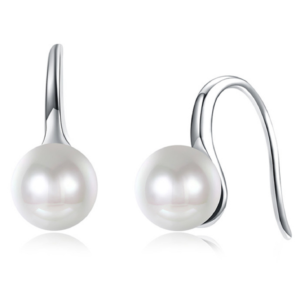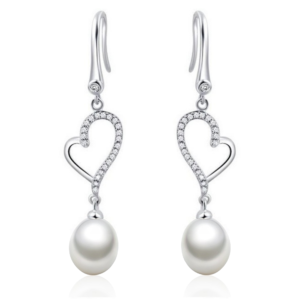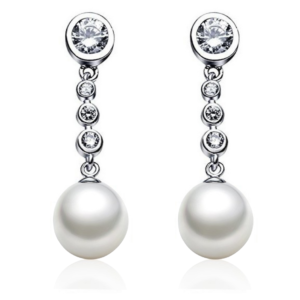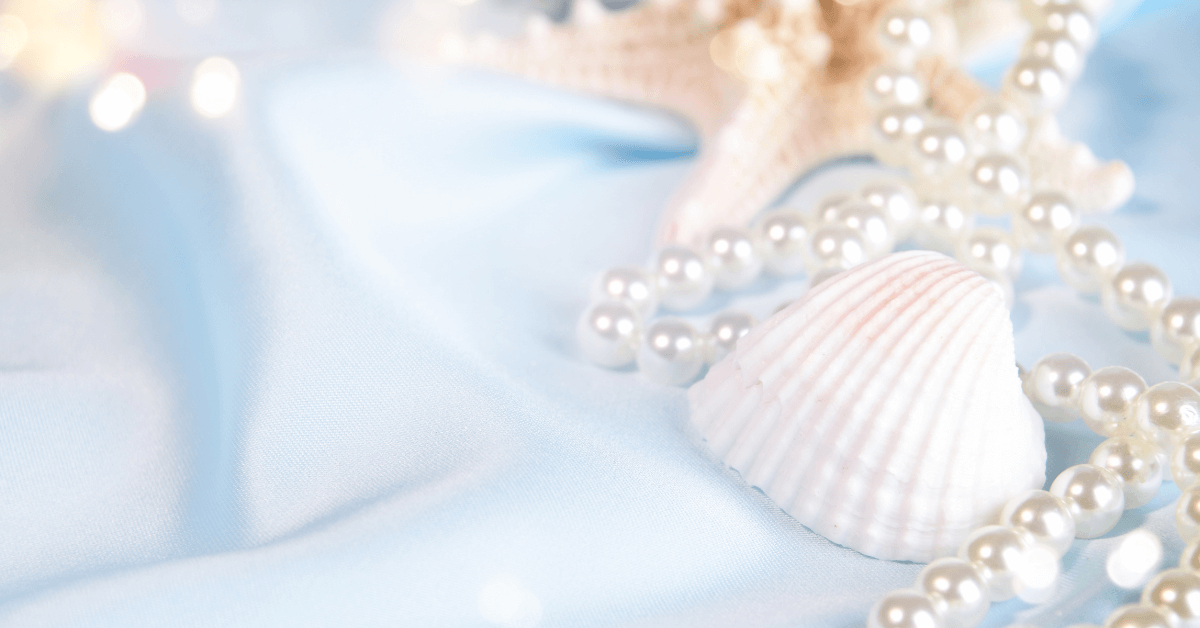
Pearl Jewelry Size Chart & Guide
So you are getting your next timeless piece of pearl jewelry but you want to understand more about the various sizing of a pearl.
Pearls sizes are generally measured in millimeters (mm) in diameter. These natural gems can have sizes that ranges from tiny seed pearls of less than 1mm in size, to large South Sea pearls that can reach up to 20mm.
General Pearl Sizes Guideline
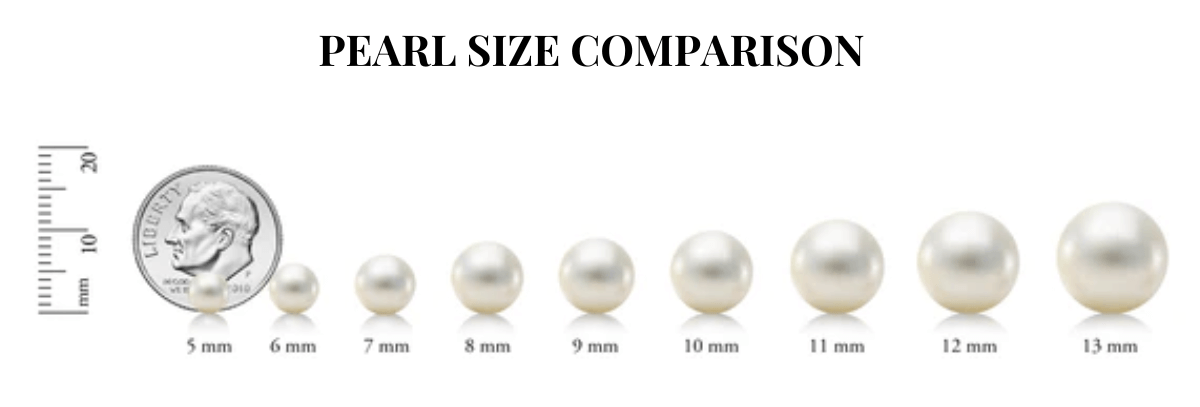
When selecting pearls, the diameter—which is measured in millimeters (mm)—is a critical factor to consider as it significantly influences the overall appearance, style and grading of the jewelry. Here’s a straightforward guide to assist you in navigating pearl sizes:
Freshwater Pearls typically vary from 2mm to 11mm, whereas Akoya Pearls are available from 6mm to 9mm. Larger diameters are more common in Tahitian and South Sea Pearls, ranging from 8mm up to 20mm.
Pearl Diameter Comparison
| Pearl Type | Size Range | Style Suitability |
|---|---|---|
| Freshwater | 2mm – 11mm | Casual to Formal |
| Akoya | 6mm – 9mm | Classic Elegance |
| Tahitian | 8mm – 20mm | Bold Statement |
| South Sea | 8mm – 20mm | Luxurious Appeal |
For a modest and understated approach, pearls with diameters between 6.5mm and 7.5mm are excellent for daily wear and complement a casual wardrobe effectively. Pearls of 7mm to 8mm are versatile, just as ideal for a day at the office as they are for an evening out.
Larger pearls of 10mm and above serve more formal occasions and create a pronounced fashion statement; they enhance the attire for events necessitating a touch of opulence and sophistication.
Remember that with the increase in size from 6mm onwards, every half-millimeter growth can translate to an approximate 15-20% increase in the overall volume of the pearl. This jump can not only impact the visual appeal of the pearl jewelry but also the price you’ll pay.
Pearl earrings offer further considerations, with 7.0mm – 8.0mm pearls forming a timeless choice for most. These sizes are large enough to be noticeable yet retain a grace that won’t overwhelm your facial features.
It’s crucial to consider how the pearl will complement you.
Age and style preferences are significant;
- Smaller pearls may better suit younger individuals or those preferring subtlety.
- Larger pearls can align with mature aesthetics or a preference for standout accessories.
By understanding these general pearl size guidelines, you’ll be better equipped to select pearls that resonate with your personal style and intended use.
Measuring Pearl Size

When selecting pearls, understanding their size is crucial. Pearls are typically measured in millimeters (mm) in diameter.
Round Pearls: You measure the diameter from one side to the other at the widest point using calipers. Here’s a simple size chart for reference:
| Small Pearls | Medium Pearls | Large Pearls |
|---|---|---|
| 2-4 mm | 5-7 mm | 8-10 mm |
| 4-6 mm | 7-9 mm | 10-14 mm |
Baroque Pearls: Due to the irregular shapes, two measurements are taken, both the length and the width. To measure the length, place your calipers at the longest point of the pearl, and for the width, at the widest point perpendicular to the length.
Pearl Strands: If you’re evaluating a strand of pearls, measure at least three pearls in the middle of the strand. This ensures consistency in size.
- For an accurate measurement, make sure your calipers are calibrated correctly and that you’re measuring in a well-lit environment.
- Be gentle when handling pearls with calipers, as their surface can be delicate.
By knowing how to measure pearl size properly, you’ll make informed decisions when purchasing pearl jewelry.
Pearl Size Chart
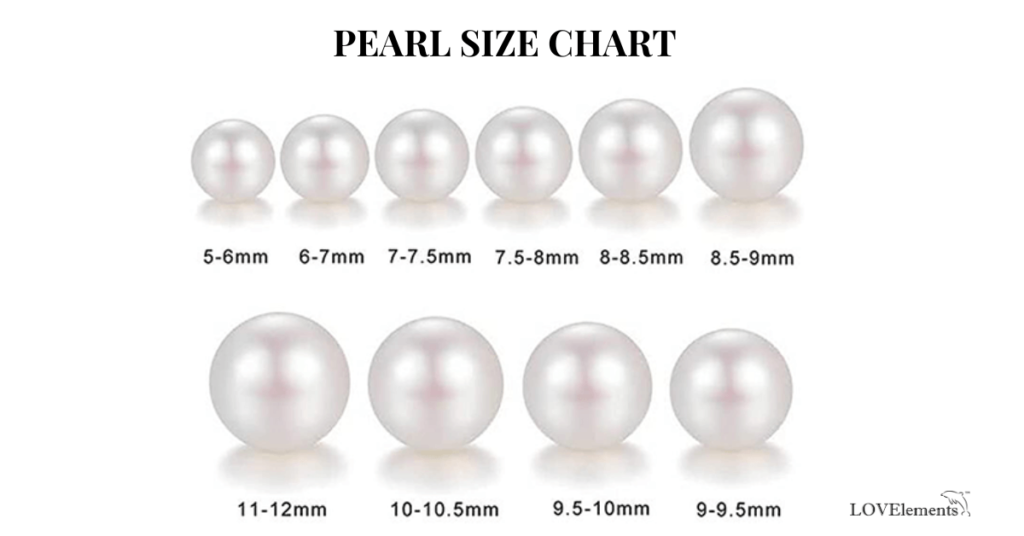
Pearl size can significantly affect the style and impact of pearl jewelry. The following size chart will help you choose the right pearls for your taste and needs.
Small Pearls (1mm to 6.5mm)
Small pearls are delicate and often used in intricate designs. They offer a subtle hint of elegance and are suitable for everyday wear.
| Size (mm) | Common Use |
|---|---|
| 1 – 2 | Seed pearl jewelry, accent pieces |
| 2.5 – 4 | Earrings, rings, fine detail work |
| 4.5 – 6.5 | Bracelets, necklaces, anklets |
Medium Pearls (7mm to 9mm)
Medium-sized pearls are versatile for various jewelry types, striking a balance between understatement and prominence.
| Size (mm) | Common Use |
|---|---|
| 7 – 7.5 | Classic earrings, pendants |
| 8 – 8.5 | Statement rings, necklaces |
| 9 | Bridal jewelry, high-end design |
Large Pearls (10mm and above)
Large pearls are eye-catching and often become the centerpiece of your jewelry. They exude luxury and are ideal for making a bold statement.
| Size (mm) | Common Use |
|---|---|
| 10 – 11 | Opera-length necklaces, bold rings |
| 12+ | Luxury pendants, statement necklaces |
Selecting the Right Pearl Jewelry for Different Occasions

Selecting the ideal pearl jewelry hinges on the event and your personal style. Pearl necklaces and earrings vary in size, making some more suited for lavish events, while others embody simplicity for everyday wear.
Pearl Necklaces and Their Sizing
| Necklace Length | Style | Suitable Occasions |
|---|---|---|
| 14-16 inches (Choker) | A statement of luxury, hugging close to your neck. | Formal events, weddings. |
| 18 inches (Princess) | The most versatile, works with almost any neckline. | Business, casual outings. |
| 24 inches (Matinee) | A refined choice that pairs well with professional attire. | Formal meetings, luncheons. |
| 36 inches (Opera) | Exudes sophistication, can be doubled for a layered look. | Gala events, upscale receptions. |
When selecting a pearl necklace, consider the neckline of your outfit and the level of luxuriousness or understated elegance you aim to present. If your budget allows, opt for longer strands for a more lavish appearance or a shorter, more subtle piece for daily wear.
Pearl Earrings Size Considerations
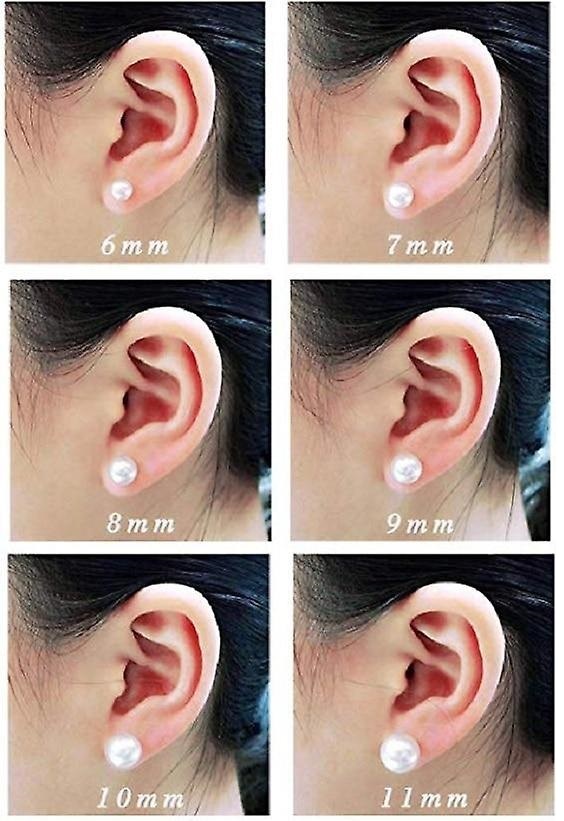
Pearl earrings range widely in size, influencing their impact and appropriateness for various occasions.
| Earring Diameter | Effect |
|---|---|
| 6-7 mm | Understated, suitable for professional settings or casual affairs. |
| 8-9 mm | Balances elegance with prominence, ideal for dinner dates or work events. |
| 10 mm+ | Highly conspicuous, reserved for statement-making at special events. |
Your choice of pearl earrings should align with both the nature of the event and your personal style. For intimate occasions or days at the office, smaller pearls offer subtlety. In contrast, larger pearls are apt for making a grand statement at celebratory or formal gatherings. Keep in mind that larger pearls often come with an increased cost, so consider your budget when making your selection.
Styling Tips and Maintenance

Selecting the right pearl jewelry and maintaining it with care ensures enduring beauty and relevance through changing styles and seasons.
Choosing Jewelry That Complements Your Look
When choosing a pearl necklace, consider your neckline and the occasion. For example, a collar necklace may be ideal for a high-neck outfit and can add a touch of elegance to your look. Consider the following attributes to match necklaces to your style:
- Age & Style: Mature women may prefer classic designs, such as a strand of pearls à la First Lady Barbara Bush, which exudes sophistication.
- Color & Material: Opt for pearls that complement your skin tone; creamy pearls often suit warmer complexions, while cooler complexions shine with silver-toned varieties.
- Size & Style: Dainty, minimalistic pieces, like those Angelina Jolie might wear, are versatile for everyday wear, whereas larger pearls make a statement suitable for formal events.
Here’s a quick reference for necklace styles and their best matches:
| Necklace Type | Suggested Style | Ideal for |
|---|---|---|
| Collar | Mature, Timeless | High-neck outfits, formal events |
| Princess length | Versatile, Everyday | Casual gatherings, office wear |
| Matinee | Statement, Bold | Creative ensembles, special occasions |
| Opera length | Elegant, Dramatic | Evening wear, elegant events |
Caring for Your Pearls
Pearls require special maintenance to preserve their luster and prevent damage. Follow these guidelines:
- After Wear: Gently wipe your pearls with a soft cloth to remove oils and residues.
- Storage: Store your pearl jewelry separately to avoid scratches from harder gemstones like diamonds.
- Avoid Chemicals: Contact with cosmetics, hair sprays, and household cleaners can harm pearls; apply them before putting on your jewelry.
- Restringing: Have your pearl necklaces restrung periodically to prevent strand breakage, a common but avoidable issue.
Remember these tips for specific pearl types:
- Cultured vs. Natural: Cultured pearls are more common in modern jewelry and generally require similar care as natural pearls.
- Freshwater vs. Saltwater: Freshwater pearls tend to be more durable, but both types benefit from careful handling and routine cleaning.
By choosing jewelry that complements your style and providing appropriate maintenance, your pearl jewelry will remain a cherished part of your collection, reflecting your personal elegance in every stage of life.
-

-
 Product on salePrecious Love Natural Pearl EarringsOriginal price was: $89.00.$69.00Current price is: $69.00.
Product on salePrecious Love Natural Pearl EarringsOriginal price was: $89.00.$69.00Current price is: $69.00. -


